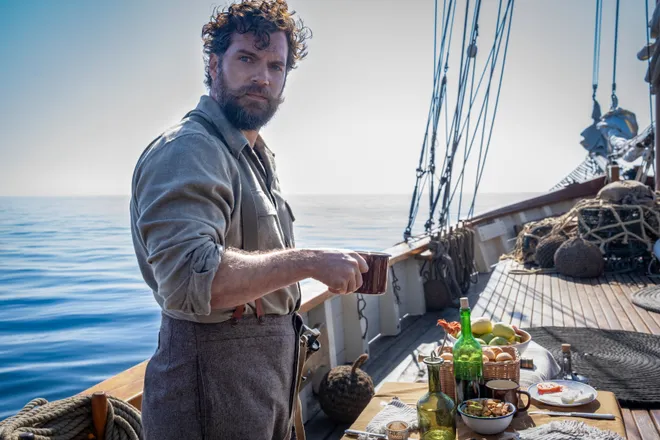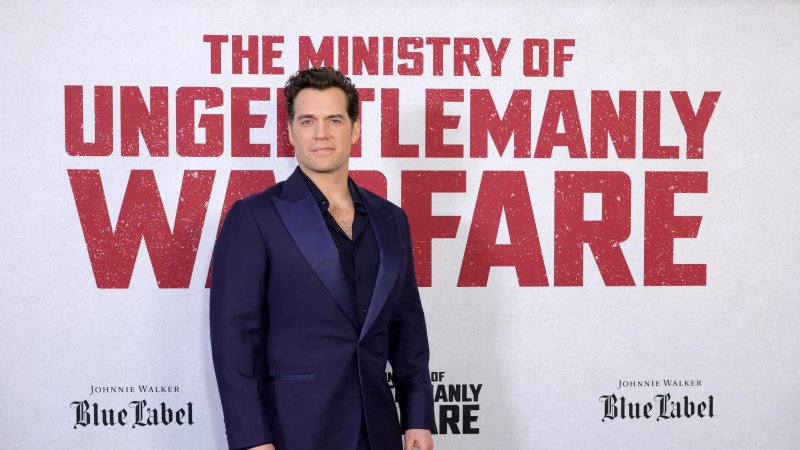'Ministry of Ungentlemanly Warfare' fact check: Did they really kill all those Nazis?
Spoiler alert! The following post contains major details about the plot and ending of “The Ministry of Ungentlemanly Warfare.”
Ready to go shoot some Nazis?
In Guy Ritchie’s R-rated action comedy “The Ministry of Ungentlemanly Warfare,” British prime minister Winston Churchill (Rory Kinnear) helps orchestrate the covert Operation Postmaster, bringing together a ragtag group of special operatives to steal and destroy several ships off the coast of West Africa carrying supplies for German forces. The World War II mission formed the basis for Damien Lewis’ 2014 book “Churchill's Secret Warriors,” which has been adapted into this wild heist thriller starring Henry Cavill, Eiza González, Cary Elwes and Henry Golding.
USA TODAY talks to Lewis and co-screenwriter Arash Amel about the real history behind the film:
Was Ian Fleming inspired by Gus March-Phillips (Henry Cavill) to write James Bond?

As a young man, Fleming was essentially a liaison between the Royal Navy and the Special Operations Executive (SOE). “His role on Operation Postmaster was not only to originate the idea, to a large extent, but to train and oversee the team that was sent out into the field,” Lewis says. “Gus March-Phillips, as the dashing English gentleman, was one of the inspirations for James Bond.” Because of the classified nature of his work, Fleming funneled many of these World War II operations “into his James Bond novels.”
Review:Henry Cavill's mustache leads the charge in 'Ministry of Ungentlemanly Warfare'
Were they really called ‘The Ministry of Ungentlemanly Warfare?’
Yes. In the movie’s final scene, Churchill visits the operatives in prison and gives them their verbose title. It was one of many nicknames for the SOE, including The Racket, The Firm and the Baker Street Boys.
“All these nicknames arose because it was highly unpopular and irregular,” Lewis says. “It wasn’t a military service and it wasn’t an intelligence agency. It was something shadowy in-between, so the military and intelligence services resented it for that reason. It was deeply unpopular, and a lot of the nicknames were disparaging.”
Did Winston Churchill really serve them lobster behind bars?
The film ends with the prime minister catering a seafood dinner for the Ministry. “I don’t know if he did that or not, but that’s exactly the kind of thing Churchill would have done,” Lewis says. “This was his organization. They were his secret warriors, and he held them very dear to his heart.”
Did Anders Lassen (Alan Ritchson) really use a bow and arrow to kill Nazis?

Ritchson’s hulking character is an instant scene-stealer, handily killing Nazis with everything from axes to bows and arrows. Lassen is nicknamed “The Danish Hammer” in the movie, although in real life he was called “The Viking.” He was, in his own way, “psychotic about killing Nazis,” Amel says. “He did show up with a bow and arrow from his hunting days in Denmark. He brought this very primitive way of killing to a very mechanized war.”
Did that bloody rescue from the Nazi base really happen?
One of the most brutal action sequences occurs early in the film when Gus and his cohorts sneak into a Nazi military base, where they gun down dozens of soldiers and save their comrade Geoffrey Appleyard (Alex Pettyfer) from torture by the Gestapo. The scene is an amalgamation of a few historical events.
“In the true story, not a single shot was actually fired,” Amel says. “What happened was even more comical: There was one Nazi (who) fainted. A bunch of them were in the shower. The commandant had a hairnet on. And they all gave up immediately when they saw these four or five guys.”

Was that suitcase train heist based on real events?
In one suspenseful sequence on a train, Marjorie and Heron (Babs Olusanmokun) swipe a Nazi suitcase full of classified information using a slightly larger, Russian doll-style briefcase. In real life, the heist went down almost exactly as depicted in the film, with a contraption built in a weapons facility known as Churchill’s Toyshop, Lewis says. “There, they developed all these crazy, mad ways of killing people: exploding suitcases, guns designed as pens, even rat droppings that were actually (land) mines when you walked on them.”
Did they actually throw costume parties to distract the Germans?
In the movie’s third act, Heron throws two elaborate costume parties ― one for Nazi officers, another for soldiers ― to distract the Germans as Gus and his men steal the Duchessa cargo ship. The parties happened: “In fact, the true story is even better than reality,” Lewis says. “The officers’ party was actually set at a café overlooking the harbor. It was the only venue available, so the British agents onshore sat the officers looking away from the harbor with a bunch of (prostitutes) so they were captivated.” They also filled the terrace with lanterns so the party was “bathed in light and the harbor was a sea of darkness. That’s how they tricked them into not seeing what was happening.”
Who was Eiza González’s character, Marjorie Stewart?

Stewart is an actress-turned-markswoman in the movie, who in real life went on to marry March-Phillips before he was killed in 1942. In actuality, “Marjorie didn’t go out on a mission in Operation Postmaster, but she (had) a key role in planning and putting it all together,” Amel says. “Given that she was actually training a lot of the female spies going behind enemy lines, it would’ve been criminal to not send her out on a mission in the movie to respect and honor her.”
How many Nazis did the Ministry actually kill?
Watching “Ungentlemanly Warfare,” you might get the idea that half a dozen operatives offed hundreds of Nazis. The exact number is impossible to nail down, but “it’s a lot,” Amel says. “They killed a lot! But you have to remember, the unit wasn’t just five or six people; the number grew to 55 (agents), leading multiple operations at different times. But the lead crew and the pioneers of it were essentially the people you see in the movie.”
Disclaimer: The copyright of this article belongs to the original author. Reposting this article is solely for the purpose of information dissemination and does not constitute any investment advice. If there is any infringement, please contact us immediately. We will make corrections or deletions as necessary. Thank you.







